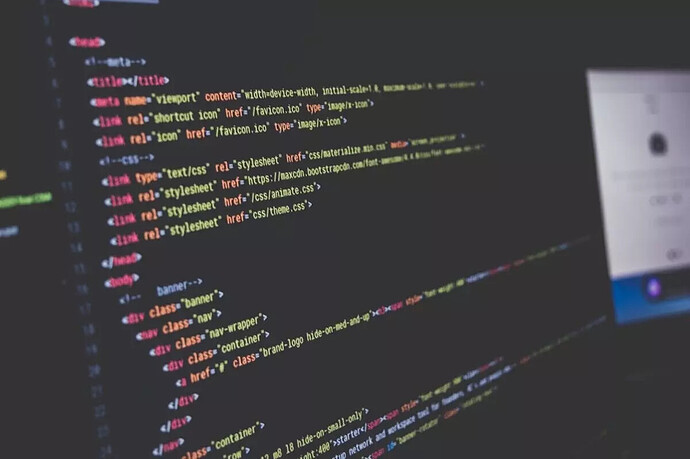The total number of computer languages to exist is approximately 9,000, though there are 50 that are the most popular programming languages in use today.
There is an incredible number of computer programming languages that are used by coders, software developers, web developers, and other computer science professionals.
You’ve got Java, JavaScript, and Coffeescript; Python and Ruby; C, C++, C#, and Objective-C; Cobol, ALGOL 58, ALGOL 60, ALGOL 68, ALGOL W, and BASIC; Fortran, Assembly languages, and machine language. There is such a dizzying array of different programming languages that at one point or another we’ve all wondered: how many programming languages are there?
How Many Computer Languages Are There? The Short Answer
According to Wikipedia, there are about 700 programming languages, including esoteric coding languages. Other sources that only list notable languages still count up to an impressive 245 languages. Another list called HOPL, which claims to include every programming language to ever exist, puts the total number of programming languages at 8,945. Some even estimate a total of up to 25,000.
List of Programming Languages
The following list of programming languages includes both popular languages and languages that are historically significant (or, perhaps, infamous for one reason or another).
| Python | Java | JavaScript | C# | C |
|---|---|---|---|---|
| C++ | PHP | R | Objective-C | Swift |
| TypeScript | MATLAB | Kotlin | Go (Golang) | VBA |
| Ruby | Scala | Visual Basic | Rust | Dart |
| Ada | Lua | Abap | Groovy | Perl |
| Cobol | Julia | Haskell | Delphi | Elm |
| PowerShell | SQL | Clojure | Elixir | Pascal |
| LISP | Ballerina | FORTRAN | BASIC | Alice |
| COBOL | Speakeasy | Simula | Smalltalk | Prolog |
| Erlang | Ada | Eiffel | Rebol | Scratch |
What Is a Coding Language?
We need to begin by trying to stake out a definition of the term ‘programming language’. For reasons that will become clear soon, this is an important step in compiling (and interpreting!) a list of programming languages.
One common way of defining a programming language is: ‘an artificial language built to allow someone to give instructions to a computer’. Computers can’t understand English, Hindi, or Chinese, and even though humans can technically learn binary (the base language of computers), almost none do. So we need some intermediate way of communicating, which we call ‘programming languages.’
These languages are used to write programs, which are complete and functional sets of instructions that computers use to accomplish tasks, like loading a web page, generating statistical analyses, and finding the sum of two numbers.
Why Are There So Many Programming Languages?
Since programming languages are an in-between for human languages and computer languages, they simplify the computer’s native language of binary. Some languages are high-level, which means they are easier to use but are less detailed. Some are low level, which are harder to use but offer more control over the computer.
In addition, many coding languages are built for a specific function. There are programming languages made for controlling automated factory machines, designing video games, or even teaching people how to program.
Now, while this may seem straightforward enough, there are lists that make certain important exceptions to different types of programming languages.
What about Markup and Query Languages?
HTML is a markup language that allows one to annotate content for display in a web browser. Most people don’t consider it a programming language because it doesn’t really contain instructions and doesn’t support basic functionality like conditional statements like many general purpose programming languages.
SQL is a query language that allows you to structure a request for data from a database. Query languages work differently from standard programming or scripting languages like Python or JavaScript, but not so differently that they’re usually excluded from a list of programming languages.
What about Esoteric Languages?
And now we arrive at one of the stranger phenomena to have come out of the programming community: entire languages built around jokes, obsessions, and the overwhelming desire programmer’s feel to push the boundaries of their technology.
Esoteric languages are often actual programming languages which are nevertheless excluded from lists of programming languages because they are not ever really intended to be used in development work.
Binary Lambda Calculus is an esoteric language built to be as absolutely dense as possible, with every program written to require the fewest characters. Malbolge was built to be as difficult as possible, with programs that are inherently self-modifying and effects which depend on where an instruction is stored in computer memory.
As is now surely clear, there is more than a little difficulty around pinning down an exact definition of what a programming language is.
So, How Many Programming Languages Are There?
It really depends on who you ask. The most accepted answer seems to be Wikipedia’s list of 700. However, it’s important to note that there are really only around 50 most popular languages that are in common use today according to the Tiobe index.
Given how quickly new languages, including crazy esoteric ones, are being developed, we may not be able to give a more accurate total.
How Many Coding Languages Should I Know?
If you’re looking to start a career in a tech field, this is an important question. Should you know how to use all 700 languages in use?
Nat at all. Much like a human language translator, you really only need to learn one to start a career. Most good professionals know a few coding languages, but it also depends on the tech field you plan to work in. (Source: Career Karma)
